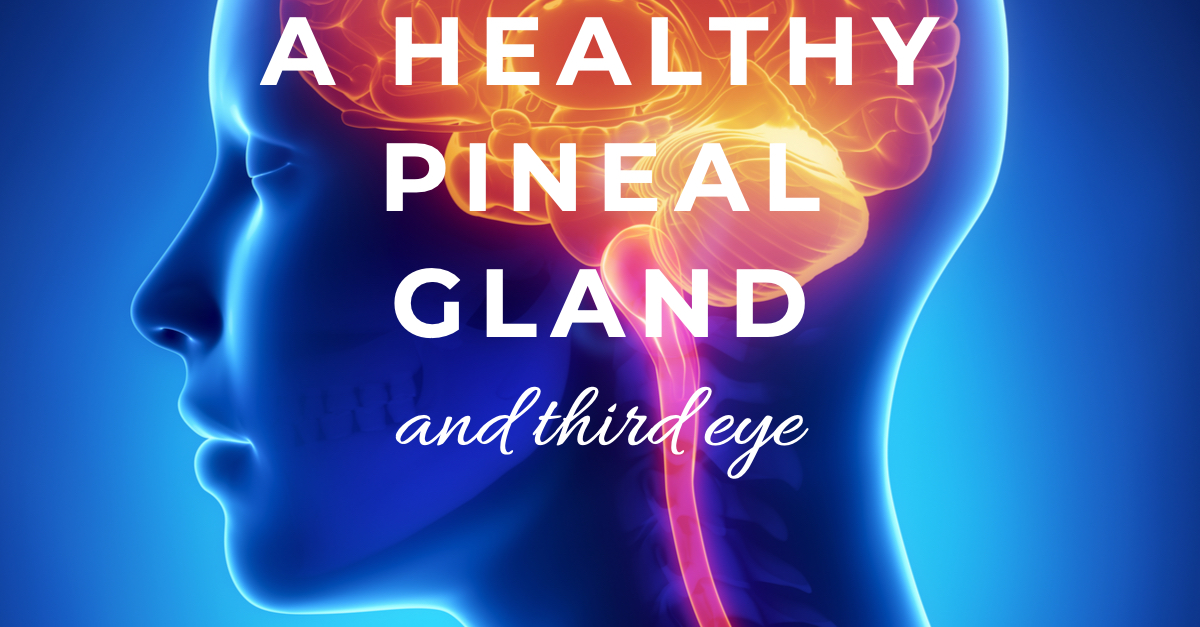 Once described by Descartes as the “ principal seat of the soul,” the pineal gland has long intrigued the realms of medical science and spirituality. As a small, neural-endocrine gland, it is nestled deep between the two brain hemispheres, posterior to the thalamus and near the third cerebral ventricle.
Once described by Descartes as the “ principal seat of the soul,” the pineal gland has long intrigued the realms of medical science and spirituality. As a small, neural-endocrine gland, it is nestled deep between the two brain hemispheres, posterior to the thalamus and near the third cerebral ventricle.
Thousands of years ago in Asia the “third eye,” described to be exactly where the pineal gland is located, was taught to be an essential component to spiritual awakening and psychic ability. To this day, many gurus and people on a holistic path are confident that a clean, non-calcified pineal gland acts as an important antenna connecting us to positive forces that support us in reaching our full potential. Whether that’s proven to be true or not, we do know that this tiny and important gland acts as a master regulator for the body and serves as a bridge between the endocrine system and the nervous system.
Best known for producing the hormone melatonin, the pineal gland helps regulate our sleep-wake cycle (circadian rhythm.) However, the pineal gland also signals endocrine hormones such as the thyroid gland, adrenal glands, the thymus, the pancreas, the ovaries and testicles, plus other non-endocrine organs. In fact, the pineal gland, which was greatly underestimated by Western Medicine for decades, plays an essential role in growth and development, body temperature, reproductive function (including fertility), cancer and tumor suppression, graceful aging, motor activity, blood pressure, immune function, serotonin production, and of course, sleep and the circadian cycle.
THE ANATOMY OF THE PINEAL GLAND INCLUDES THE:
- Pinealocytes – types of endocrine cells that detect light from the eyes
- Glial cells – types of brain cells that support neurons for transmitting information to other cells
Fascinating Facts About the Pineal Gland
- Pinea is Latin for pine cone, the shape of the pineal gland.
- Almost all vertebrate species have a pineal gland.
- The pineal gland is not protected by the blood-brain barrier even though it’s positioned deep in the brain. Instead, astrocytes create a unique barrier with surrounding blood vessels, forming the blood-pial barrier.
- The pineal gland is about the size of a large grain of rice and floats in cerebrospinal fluid.
- DMT (Dithmethyl Tryptomine), a naturally occurring psychedelic believed to be experienced during birth, sleep, meditation, and death, is produced by the pineal gland.
- Pinealocytes help the brain create a “biological clock” for managing sleep-wake cycles.
- Melatonin and serotonin levels are balanced by the pineal gland, with serotonin produced during the day and then converted into melatonin at night.
Source: “The Entire Function of the Pineal Gland” The Human Origin Project TheHumanOriginProject.com Accessed January 8th, 2020. https://humanoriginproject.com/function-of-the-pineal-gland/
Potential Symptoms of Compromised Pineal Gland Health
- Disrupted sleep patterns, including insomnia
- Low energy
- Anxiety
- Depression
- Intense cravings for alcohol and other concentrated sugars
- Weak intuition
- Early sexual development in girls (may indicate a calcified pineal gland)
- Pineolama (rare pineal tumors)
Holistic Secret: The size of the pineal gland is fully reached when humans are about 1-2 years old, but its weight continues to increase gradually during and after puberty. As a result, these are extra important timeframes to prioritize quality nutrition and avoid toxins as much as possible.
Stress Factors for Pineal Gland Health
- Mercury and heavy metal exposure
- Fluoride added to toothpaste and tap water
- Calcium supplements derived from rocks and shells, instead of plants
- Sugar and artificial sweeteners
- Caffeine
- Excessive alcohol
- Tobacco products
- Inadequate sleep
- Excessive exposure to artificial lighting, especially at night
- Excessive exposure to digital screens, especially at night
- Pollution, pesticides, and toxic chemicals, especially neurotoxins
- A highly acidic diet
- Chronic inflammation
- Chronic stress
- A busy mind or frenetic thinking
- Ignoring intuition and emotions
- A lack of exercise and good circulation
- Excessive cell phone radiation
- Excessive EMFs (electro-magnetic frequencies)
With modern living, it’s relatively easy to stress the pineal gland and create an unwanted ripple effect throughout the entire body. So, be sure to support this master regulator for a wide range of physical and mental health benefits.
Find out which foods and herbs are best for the pineal gland and overall mind-body health in my Radiant Health program.
My mission: As a Holistic Health Coach & Eco Expert, I’m dedicated to leading you straight to the core of what it takes to enjoy a new level of vitality, desired weight loss, sustainability, and detoxification. Enjoy my transformative programs and experience true health with true purpose!

Leave a Reply